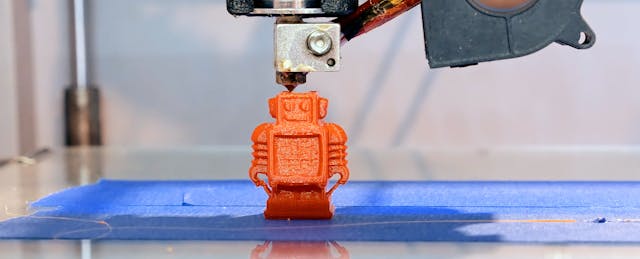Across America, students are learning in new ways many of us could only imagine, tinkering, creating and experimenting in makerspaces to solve real-world challenges.
We have seen this transformation first-hand here at Arizona Science Center’s CREATE makerspace, where I work.
High school students have created prototypes for innovations that redefine how we travel in the air and support sustainable living on Mars. Middle school students have used a mix of laser cutters, three-dimensional printers and wood-cutting tools to develop turbochargers and crash test protection devices that solve real-world issues in the automotive industry. And even our fourth grade students have worked through a variety of design challenges, building boats that can stay afloat with increasing loads and using magnets to power cars.
Here in Phoenix and nationally, young people learn in spaces where they can collaborate within teams, critically think about complex problems in their communities and develop creative solutions to these issues; skills that are essential to success in the 21st century workforce.
As we approach the fourth annual National Week of Making (June 21-27) alongside hundreds of community-based organizations, fellow science centers, businesses and educators, we have reason to celebrate that an unprecedented number of young people can access these hands-on, interactive learning opportunities that prepare them to thrive in the careers of the future.
However, there are still barriers that we must overcome if we hope to realize the full potential of makerspaces. In too many of our schools, we see that administrators perceive makerspaces as environments for play rather than opportunities for enriching assessment that can indicate students’ readiness for the workforce. We hear claims that makerspaces are too difficult to manage and maintain, often falling on the shoulders of one committed educator or program leader. Additionally, there is the assumption that makerspaces are simply too expensive, requiring an assortment of costly tools and materials.
There is no better time than this week to flip those assumptions on their head. First and foremost, makerspaces are more than just play spaces; they present an opportunity to complement core subject-based lessons with hands-on, inquiry-based challenges that require students to put those principles into practice.
They can prompt us to assess and measure student progress in new ways; both through digital badges that demonstrate mastery of specific skills and summative portfolios of work that indicate readiness for cutting-edge careers in manufacturing, STEM careers and the creative arts. And, as students iterate and experiment to reach solutions in makerspaces, they are demonstrating core critical thinking, logical reasoning, and creativity competencies.
Many economically disadvantaged schools and communities across the country do not have access to makerspaces, fueling the assumption that these are luxuries rather than invaluable learning spaces. While this is a reality that many schools and communities face, it also presents an opportunity to engage with community-based organizations and businesses, who can serve as both resource and knowledge partners—and provide the materials, expertise and physical space to empower students to become makers.
How does that look? Engineers at nearby technology companies and factories can provide students with hands-on lessons and lead design challenges, and libraries can provide free technology kits and resources. Here at Arizona Science Center, we show how museums can team up with area employers such as Boeing and TechForce to provide a mix of tools that all students can use to navigate challenges that solve real-world problems.
Even as some districts navigate resource constraints in structuring their own makerspaces, science centers and other informal learning organizations can provide teachers with the pedagogical tools and resources to bring a “maker mindset” to their work.
With this support, educators can facilitate structured periods of time throughout the day for students to explore hands-on, inquiry-based learning activities outside the realm of their core subjects. Teachers can encourage the type of reflection and iteration that is so essential to success in the workforce through think/pair/share discussions, journaling and blogging. And they can bring an array of evidence-based activities to the classroom by accessing on-site, project-based professional learning opportunities and ongoing mentorship at their science centers’ makerspaces.
Instead of reinforcing lecture-based instruction and summative assessment, such partnerships let schools structure hands-on, applied activities; provide students with the space to iterate and improve on a project over time; and create forums where they can demonstrate the success of their ideas.
Finally, our science centers and community-based organizations are uniquely positioned to coordinate with universities and teacher preparation programs in an effort to equip prospective teacher candidates with the “maker mindset”—and provide the pedagogical and practical foundation that they need to bring making to their classrooms.
As we celebrate the National Week of Making, we can celebrate that more and more students have opportunities to tap into hands-on STEM learning experiences and gain the skills they need to excel in the careers of tomorrow. While too many students still lack these opportunities, schools and districts can leverage community-wide resources to bridge the gap, remaking the very way they learn in a 21st-century world.


